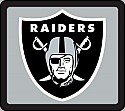
Everyone points to the Vicksburg and Gettysburg campaigns as the turning point of the Civil War. SO many people support this view that it is hard to argue against historians like Bruce Catton and James McPherson. Moreover, the supporters of this view have the numbers to back up their thesis. By late May 1863 the Confederate armies were at their strongest and with over 301,000 men serving in their ranks. By the end of the Gettysburg and Vicksburg campaigns the Rebels had suffered (Killed, Wounded, Missing & Captured) 59,338 men. Over 31,200 men were listed as captured, killed, wounded or missing during the Vicksburg campaign. Also, we know Lee’s bloody casualty list at Gettysburg in which 28,063 men were killed, wounded, captured or missing. These were losses that the Confederacy could not afford and it sapped the fighting strength of their armies. Although many men would return to the ranks in prisoner exchanges and recovery from the medical ward, the Confederate armies never had the same offensive capabilities that they had possessed prior to the summer of 1863. This doomed the Confederacy and eliminated any chance of foreign recocignation.
I have to ask this question…could historians be wrong? Could a different combination of back to back campaigning in the eastern and western theatres doomed the Confederacy? Lets use the Seven Days and the Shiloh campaigns as our thesis to prove that the historians got it wrong. Facts: The battle of Shiloh was fought for two days in April 1862 and the Seven Days campaign occurred between June 26-July 1, 1862.
At Shiloh the rebels had 1,723 men killed and 8,012 wounded. This is a grand total of 9,735 men. Moreover, 1,229 men were missing or captured during the two day struggle in Pittsburg Landing, Tennessee. This makes the total Confederate causality list at Shiloh to read 10,964. That’s peanuts when compared to Gettysburg but I would like my readers to stick with me because I still have to add the causalities for the Seven Days. I do not want to imply that having more or fewer casualties’ means anything but my point here is that these campaigns severely sapped the Confederates of their armies and even the most polished Civil War historian rarely discusses its significance or tallied the numbers.
After the Seven Days battles were over the Confederates put together their casualty list and it reads as follows; 3,478 killed, 16,261 wounded, 875 missing, and I was unable to find a statistic for captured. This gives the Army of Northern Virginia a grand total of 20,614 killed, wounded and missing.
If you total both campaigns that occurred from April-July 1, 1862 you get an astounding statistic. Nearly 31,578 were killed, missing, wounded and captured during nine total days of combat. That’s an astonishing statistic but it does pale in comparison to the combined rebel losses at Gettysburg/Vicksburg. However, the Vicksburg campaign took place from May 1-July 4, 1863 and that is a month long siege in which most of the rebel causalities were captured during Pemberton’s surrender. The campaign itself took sixty-five days.
If you combine the 65 days for the Vicksburg Campaign and three days for the Battle of Gettysburg you get a grand total of 68 days. In total 59,338 men were rebel casualties and that led to an average of 872 men a day. Meanwhile the two days at Shiloh and the Seven Days Campaign led to 31,578 total and 3,508 men a day. Obviously nine days is a lot shorter than sixty-eight days but you get my point here. For fun I combined the totals off all four campaigns and divided them by the total days of combat. 31,578 + 59,338 = 60,916 men! If you average it out using the 77 total days of combat we reach an astonishing 791 men a day!!!
The Seven Days and the Battle of Pittsburg Landing cost the Confederacy dearly. But the numbers stand up to the Vicksburg/Gettysburg campaigns when you realize that these were men that the Confederacy could not afford to lose. At least in the case of Gettysburg, the Seven Days and Shiloh, were the Confederates were on the offensive, the casualty list bled the Confederacy to death. Perhaps some historians are correct in their belief that Vicksburg/Gettysburg was the turning point of the Civil War. However, these four campaigns doomed the Confederacy to destruction and one could argue that that is the case for all of the rebel campaigns, I think that the bloody fields of Tennessee and Virginia didn’t ruin the cause or were the turning point but they were the first major campaigns in which the Confederacy suffered the loss of men that they could not replace.
Before I close for today you might be asking “What were the Federal casualties?” The North lost 10,162 men at Shiloh and 9,796 during the Seven Days. They were on the defensive most of the time and did not suffer as many casualties as the Confederates. The totals for both campaigns (counting the missing) reach a grand total of 26,011 men. Therefore, the Confederates lost 5,567 more men than the Federals did due to their almost constant offensive activities during the Seven Days & Shiloh campaigns.
Online Sources used
http://www.infoplease.com/ipa/A0004615.html
http://americancivilwar.com/cwstats.html
Book Sources:
McPherson, James M. Battle Cry of Freedom The Civil War Era. The Oxford history of the United States, v. 6. New York: Oxford University Press, 1988.
Foote, Shelby. The Civil War, a Narrative. New York: Random House, 1958.
















